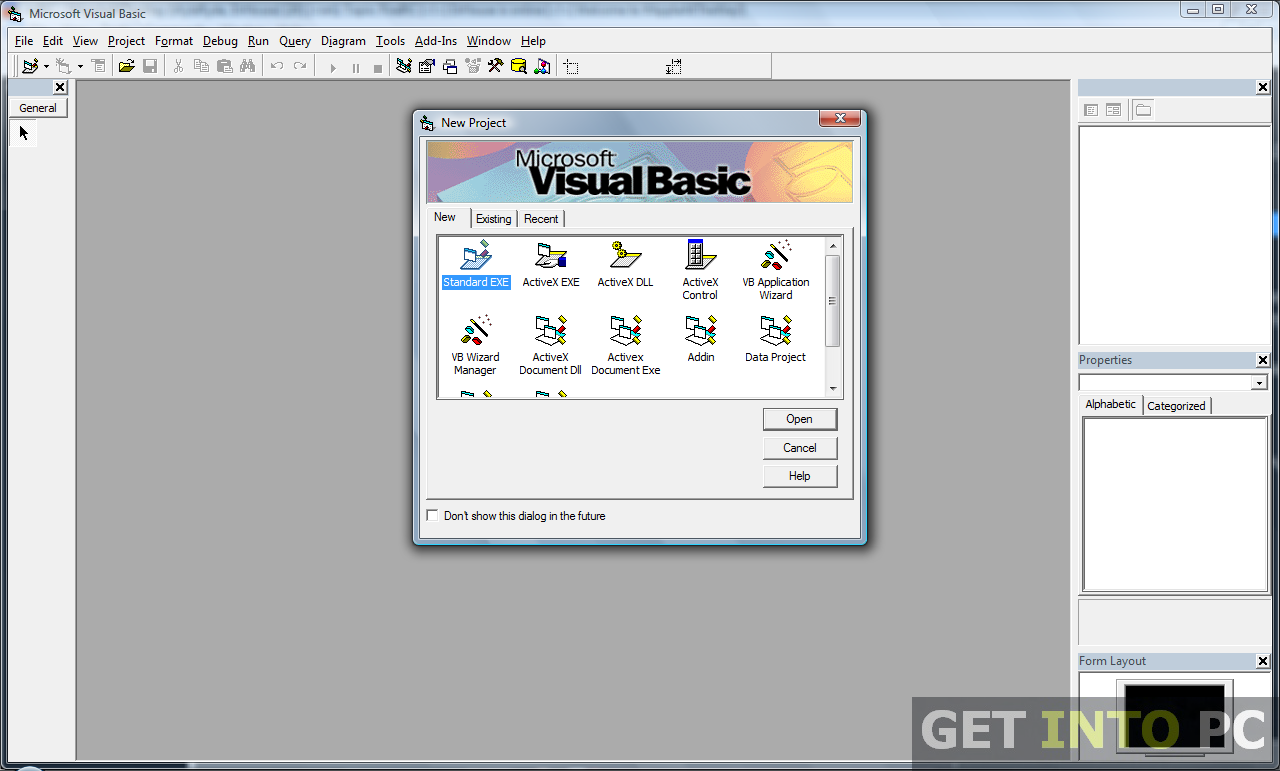
- VISUAL BASIC DATA TYPES PORTABLE
- VISUAL BASIC DATA TYPES CODE
- VISUAL BASIC DATA TYPES PLUS
- VISUAL BASIC DATA TYPES WINDOWS
A Variant behaves as a number when you use it in a numeric context and as a string when you use it in a string context. Because Variant is the only data type in VBScript, it's also the data type returned by all functions in VBScript.Īt its simplest, a Variant can contain either numeric or string information. It is a special kind of the data type that can contain different kinds of information, depending on how it's used.
VISUAL BASIC DATA TYPES CODE
The code example below demonstrates declaration and conversion of various standard data types.īyteVar = CByte( "12") 'converting from text value to byteīyteVar = CByte(15.6) 'floating number is not acceptable so the value will be rounded to 16 Dim intVar As IntegerĭoubleVar = CDbl( "106.VBScript has only one data type called a Variant. The function of converting to Variant is CVar These variable types can hold any data object (either value type, reference type or arrays) VariantĪllocates 16 bytes of storage. Used in (visual-basic/variables/declaration#early-binding-and-late- binding) Any These variables are any reference types which might hold complex data and structures. The function of converting to String is CDate Reference Value ranges from January 1, 100 to December 31, 9999. Variable holding the information about date and time. The function of converting to String is CStr Date and Time Value ranges from 0 through 2 billion characters.
VISUAL BASIC DATA TYPES PLUS
StringĪllocates 10 bytes plus the number of characters of storage. Text variables are holding literals and when defined are enclosed in double quotes "". The function of converting to Boolean is CBool Text Logical variables are used in conditions and presented as 1 (True) or 0 (False) BooleanĪllocates 2 bytes of storage. Note that variable of type Decimal must be declared as Variant and assigned using CDec function. The function of converting to Decimal is CDec. The type declaration character for integer is The function of converting to Currency is CCur DecimalĪllocates 14 bytes of storage. The function of converting to Single is CDbl CurrencyĪllocates 8 bytes of storage. The type declaration character for double is #.

The function of converting to Single is CSng DoubleĪllocates 8 bytes of storage. The type declaration character for single is !. For high precision numbers either Currency or Decimal types can be used. Different type of variables allow to store different value ranges with different precisions. These types of variables are used to hold positive and negative numeric values with decimal points, i.e.
VISUAL BASIC DATA TYPES WINDOWS
In particular this is used in Windows 32 APIs for pointers and handles.
VISUAL BASIC DATA TYPES PORTABLE
LongPtr usually used for writing portable code that can run in both 32-bit and 64-bit environments. Represents Long type (4 bytes) on 32-bit systems and LongLong type (8 bytes) on 64-bit systems. LongLong is a valid declared type only on 64-bit platforms. Type declaration character for LongLong is ^. The function of converting to Long is CLng LongLongĪllocates 8 bytes of storage. The type declaration character for long is &. The function of converting to Integer is CInt. The type declaration character for integer is %. The function of converting to Byte is CByte. Run-time error '6' overflow when assigned integer value out of the accepted range ByteĪllocates 1 byte of storage. If the assigned value doesn't fit the range Run-time error '6' overflow will be displayed at the compile time. Different numeric types allow storing different value ranges and requires different size of the allocated storage. Numeric type variables are used to hold positive and negative integer values (without the decimal point), e.g. Most of the types provide specific function to convert the value from a variant. Some of the types have declaration character which can be used to explicitly define the type of the variable in a short form.


Each type allocates different size of memory storage. The following classifications list different standard types in Visual Basic grouped by categories.


 0 kommentar(er)
0 kommentar(er)
